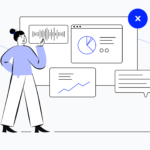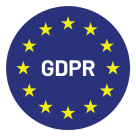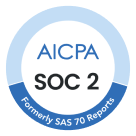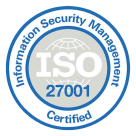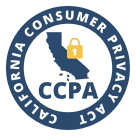A to Z of call center terminology

Ever feel like people at your call center are speaking a secret language and you missed the memo? Don’t worry—we’ve all been there. Between acronyms, buzzwords, and technical terms, this industry has its own vocabulary. And getting familiar with it can save you a lot of headaches.
To make your life easier, we’ve put together a glossary of must-know call center terms. Whether you’re new to the job or want your team to feel more confident, this guide will be a huge help.
Why a Glossary Matters in a Call Center
A call center glossary is a handy collection of common terms, acronyms, and phrases you’ll hear every day in a call center..
Why is it worth having one?
- It keeps everyone on the same page: avoids confusion and improves communication between agents, supervisors, and managers.
- It makes training new agents easier: helps them get up to speed faster and make fewer mistakes in their first weeks.
- It boosts service quality: when your team knows the key concepts, customer interactions run more smoothly and efficiently.
- It makes sense of reports and metrics: helps the team understand key performance indicators and spot improvement opportunities in real time.
- It enhances your team’s professionalism: using the right industry terms shows customers and partners that you know your stuff.
The glossary is just the beginning: learn how to train agents who make a difference.
What are the common call center abbreviations?
If you work in a call center, chances are you’re already familiar with plenty of acronyms and buzzwords from the B2C world. But it never hurts to brush up—or learn a new term that could make your day-to-day a little easier.
In this list, we’ve handpicked some of the most common call center terms, acronyms, and phrases you’ll hear, both in English and Spanish. From everyday essentials to a few you might not hear as often.
So let’s dive in and clear up the jargon that keeps call centers running smoothly.
A
ACD
Automated Call Distribution system: a telecommunications technology that distributes incoming calls to a specific group of terminals or agents within an organization, based on pre-set distribution rules. It aims to route the caller automatically to the most appropriate agent, based on all available caller information stored in the call center system. Find out more here.
ACW
After Call Work Stands for the post-call tasks, which a customer service representative has to do after the end of the conversation and the timing of them. The goal is to shorten the time of tasks such as writing call notes, updating help desk information, and providing appropriate feedback.
AHT (Average Handling Time)
AHT, or Average Handling Time, is the average time it takes for an agent to handle a call, resolve the issue, and complete any related tasks. It’s a key metric for measuring operational efficiency and optimizing processes.
API
Application Programming Interface: an IT term that defines interactions between software intermediaries; it connects channels in a call center and might synchronize your clients’ data from your business systems to keep agents updated with all necessary information.
B
BPO
Business Process Outsourcing: a method of subcontracting some business-related operations to third-party service providers or vendors. In these terms, it’s simply choosing a team of outsourced call center agents instead of providing inbound ones.
BI
Business Intelligence (refers to all kinds of business in general): transforming data into actionable insights that determine an organization’s strategic decisions. It also relates to tools that provide access to insights about the call center’s performance in an affordable way, based on available data.
C
CCR
Call Center Representative: a person, who answers incoming customer calls and provides personalized support.
CCR
Customer Control Routing: the process of customizing customer experience by routing incoming calls to specific agents that can solve their specific issues. It is achieved with the help of software wherein the caller is informed about the options at the beginning with the help of IVR.
CRM
Customer Relationship Management: a system that allows a call center to organize, automate, and synchronize every aspect of customer interaction.
CTI
Computer-Telephony Integration: connects the company’s telecom with the software and allows all call center agents to answer calls directly from their devices.
D
DID
Direct Inward Dialing: a telephone service that provides a block of numbers for calling directly to a specific phone at the company instead of waiting in a queue waiting for redirection. It can offer customers individual phone numbers for each person within the call center.
DNIS
Dialed Number Identification Service: a service offered by call centers to make commercial clients aware of what number was dialed for each incoming call. It allows the IVR to offer different menu options and route the calls to different groups of agents so that callers would be routed to the most suitable employee.
E
ERMS
Email Response Management System: software automation that helps with handling all the email messages. It categorizes individual emails, open, evaluates and, if needed, forwards them, to help with managing multiple communication channels within a call center.
EWT
Expected Wait Time: just as it sounds – it’s a period spent in a queue by an inbound call, waiting for an answer, or a callback, from an agent. It also includes the time when a caller is navigated through all the IVR prompts.
F
FCR
First Call Resolution: a metric, that shows a call center’s ability to resolve clients’ issues within the first call they make. It’s also an element of a CRM; it has a direct impact on service efficiency and costs.
FTE
Full-Time Equivalent: the number of staff you need to hire, to create a team, which can drive performance on the expected level. Specifically, one FTE equals full-time employee’s hours. It may consist of a few part-time employees, whose work altogether gives a full-time tenure.
G
GOS
Grade of Service: a metric used to calculate the probability of call being delayed or even blocked. Equivalent to the number of blocked calls divided by the number of offered calls.
I
ISDN
Integrated Services Digital Network: a telecommunications protocol, which describes a standard for digital telephony, concerning transmitting voice and data over traditional phone lines. It allows multiple devices to use the same phone line, which is necessary for the call centers.
IVR
Interactive Voice Response: an automated telephony software system interacting with the caller, who listens to the system menu and responds by choosing different options with the smartphone. An IVR can play a recorded greeting, connect callers with an agent, transfer them to a queue, or facilitate the self-service action. Read more here.
K
KM
Knowledge Management: the process of defining, structuring, and sharing the knowledge, experience, and initiatives of employees. The main goals of KM are to create value, save knowledge within an organization, meet its tactical and strategic needs, and improve a call center’s efficiency with wisdom that is useful for some purpose.
KPI
Key Performance Indicator: a way of measuring the progress of the company towards achieving its goals at multiple levels to measure its effectiveness and evaluate its success at reaching targets. Here are the most useful metrics to track in the call center.
L
LOA
Least Occupied Agent: just as it sounds – an agent who has taken the fewest calls up to that point in a day; it can be a base of call-routing strategy, which is the percentage of the time an agent remains busy throughout the day.
LAN
Local Area Network: connects technical devices together in one location, ranging from large to small: like one network user or thousands of users within an enterprise; devices include servers, desktop computers, and more.
M
MIA
Most Idle Agent: an employee who is available – ready and waiting to take (or make) calls.
MMR
Multi-Media Routing: an integration of many channels where you can talk with clients, such as email, text messages and voice calls to create an experience of comprehensive customer service. That’s possible by connecting call center software with other business tools
N
NSP
Network Service Provider: a company that sells bandwidth and access to internet backbone infrastructure & services mostly to other service providers.
O
OPA
Off Phone Activity: basically everything call center agents do when they aren’t making a call to a customer.
P
PBX
Private Branch Exchange: a telephone network in an enterprise that manages incoming and outcoming phone calls. It’s used for communicating by its users both: internally and externally, using different communication channels (like VoIP, ISDN).
PCP
Post Call Processing: an amount of time spent between two successive calls, when agents take to perform the post-call formalities.
PDA
Personal Digital Assistant: a small networked computer or a mobile device, which bases on application software, that works as a personal organizer; mostly replaced by displaced by smartphones.
PSTN
Public Switched Telephone Network: the aggregate of the world’s phone networks, operated by a combination of local, regional, or national telephony providers of public telecommunication.
Q
QM
Quality Monitoring: measuring the level of service in a call center by listening and evaluating phone conversations to improve call handling; often also by tracking the performance of agents and analyzing the KPIs & CRM metrics.
QoS
Quality of Service: the level and complexity of employees’ work and service, which is provided to customers, that manifests in client’s satisfaction; here’s a list of factors that determine QoS in a call center.
R
RNA
Ring No Answer: the amount of time when a customer service representative can’t make calls or isn’t at the place, so the calls are left unanswered.
ROI
Return on Investment: a financial metric used to evaluate the performance and the profitability of the investments, which are planned to be made or have already been made.
S
SBR
Skill-Based Routing: a strategy of routing a call directly to the most qualified agent in the call center, to provide the most suitable customer service to the particular issue.
SLA
Service Level Agreement: an interdependent commitment between organizations or a service provider and a client that defines particular aspects of this service, such as quality and responsibilities; it defines a level of service a client or a partner expects from the vendor.
T
TAPI
Telephony Applications Programming Interface: an API that provides an integration of telephony and computer services, allowing personal computers to use telephone services including voice calling, dialling, conferencing, and more.
TCO
Total Cost of Ownership: a financial estimate that determines the direct and indirect costs of operation, a product or system; it’s the purchase price plus the costs of operation.
TTS
Text to Speech: a form of assistive technology that converts text into a more-less natural-sounding spoken voice output using API.
V
VoIP
Voice Over Internet Protocol: a group of technologies that facilitate the delivery of voice communications and multimedia sessions over IP networks, instead of a local telephone company.
VPN
Virtual Private Network: extends a private network across a public network by creating a private network from a public internet connection. It gives you online privacy and anonymity by masking your IP address, which makes your online actions virtually untraceable. It might be safer than encrypted WiFi hotspots.
VRU
Voice Response Unit: an automated telephone answering system that manages inbound or the front end phone calls. It navigates a caller through a series of prerecorded messages from playing a greeting to presenting menu options, with which clients can interact with their keypad or speech (depending on the features).
W
WAN
Wide Area Network: a large telecommunications network that extends over a wide geographical area often established with leased circuits to facilitate communication between devices from around the world.
WFM
Workforce Management: is an integrated, institutional process meant to maximalize performance levels and competency of the organization’s employees. It includes activities to maintain a productive workforce and creating staff schedules to accomplish tasks with the best possible outcome.
WFO
Workforce Optimization: a business strategy involving processes automation, compliance on legislation, and solving problems related to staff’s performance. It’s focused on balancing customer satisfaction, operational costs, service levels, and other KPIs to get the maximum benefit out of the employees.
Telemarketing Vocabulary: Key Terms
In telemarketing, every term describes a vital action— rom the first contact to closing the deal. Knowing these words well is crucial to avoid missing opportunities and to maximize your sales.
- Cold call: contacting a potential customer without prior notice to initiate a possible sale.
- Sales pitch: a brief, persuasive presentation designed to capture the customer’s interest.
- Objection: a customer’s concern or question that must be addressed to move the sale forward.
- Follow-up: a later contact aimed at resolving doubts or closing the sale.
- Closing: the action of finalizing the sale or securing the customer’s commitment.
- Sales script: a structured text that guides the conversation to persuade and sell.
- Qualified lead: a contact that meets specific criteria to be considered a potential buyer.
- Dynamic script: an adaptable script that adjusts based on the customer’s reactions and needs.
- Conversion: when a call results in a sale or the expected outcome.
- Telemarketing campaign: an organized series of calls with specific commercial objectives.
- Productive contact: an effective dialogue between the telemarketer and the recipient, where real, meaningful communication is established.
- Follow-up productive contact: when the recipient shows interest or openness to the offer in the medium or long term, leaving the door open for future actions.
- Lead: a user who has taken a key action defined by the company, making them a potential customer ready to be worked on.
- Direct marketing: communication targeted at a specific audience through channels like physical mail, email, or phone calls, used to promote and sell products or services.
- Telemarketing: strategies for promoting and selling products or services through remote channels, mainly by phone.
- Cross-selling: a technique for selling additional products or services that complement what the customer already has, increasing the total value of the sale.
- Upsell: the action of increasing the planned purchase or enhancing the products or services offered to the customer during the call, maximizing revenue.
Master the Lingo, Master the Game
Knowing these terms might seem simple, but it’s crucial to avoid misunderstandings that cost time, resources, and customers. When your team masters this vocabulary, communication and efficiency improve on every call.
Understanding what abbreviations mean is just the first step; what truly matters is that the team knows how to apply that knowledge to improve their results and avoid common mistakes.
That’s why investing in training and hands-on practice sessions is essential to strengthen your team’s skills, boost productivity, and deliver a more professional customer experience.












